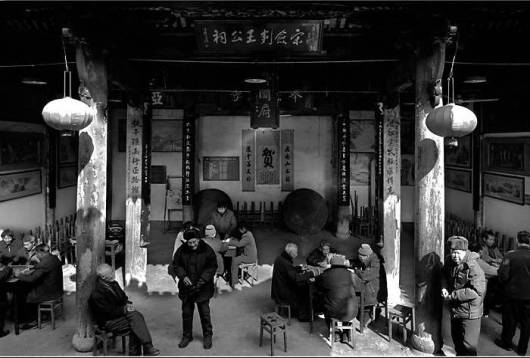Clan-nation development in China through history
Author : Wang Xiaoyang Source : Chinese Social Sciences Today 2014-11-26

Ancestral temple used to be for worshiping ancestors and now is still a gathering place for various activities.
China’s modern clan studies began in the first half of the 20th century and has thrived since then due to scholars’ efforts, especially after reform and opening-up. However, theories common in clan studies in China today still reflect thoughts and systems of Western scholars.
Constructing a localized clan studies system requires deeper study of the relationship between clans and the nation.
Since the Qing Dynasty (1644-1911), clans coexisted with the centralized system for more than 2,000 years. Influences of clans can still be seen in every aspect of Chinese society.
Therefore, the relationship between clans and the nation should be the logical starting point for understanding clan development. The clan-nation relationship is the basic structure of China’s clan development.
The greatest significance of the clan-nation structure reflects the sequence and features of China’s clan development. The political system characterized by supreme imperial power existed in ancient China for a long time, and the imperial approval is the primary prerequisite for the development of clans. The recognition for clan-nation structure as the main structure for clan development can reveal the characteristics of the interactions between clans and the nation in different phases and also patterns of their relationship.
After a review of the clan-nation structure after primitive society, there were four stages of clan development in China, namely: the separating stage during the Xia (C.2070-C.1600BC), Shang (C.1600-1046BC) and Zhou (1046-256BC) dynasties; the confrontational stage during the Qin (221BC-206BC), Han (206BC-AD220), Wei (220-265), Jin (265-420) and Northern and Southern (386–589) dynasties; the swinging stage during the Sui (581–618), Tang (618–907), Song (960–1279) and Yuan (1279–1368) dynasties; and the formative stage during the Ming (1368–1644) and Qing dynasties.
Within a clan, people are related by blood. In the Xia, Shang and Zhou dynasties, clans began to separate from the nation. The centralized authority in the Qin and Han dynasties forced clans to be in confrontation with the country, and this relationship peaked during the Wei, Jin and Northern and Southern dynasties. During the Tang, Song and Yuan dynasties, the confrontation continued with the priority altering from one party to another, but gradually the nation became dominant in terms of both institutions and thoughts.
During the Ming and Qing dynasties, the centralization of authority was unprecedentedly strong, and clans entirely became attached to the nation.
By examining relations between clans and religions, we can understand the influence of the nation on the development of clans. Ancestral worship ran through the whole process of clan development. Ancestral worship was manifested by sacrificial rites and systems. Therefore, changes of sacrificial rites and systems reflect both shifts of religious beliefs and national institutions.
The first period was the Xia, Shang and Zhou dynasties when sacrificial rites became ingrained and religions became a ruling tool, and the use of temples were only confined to the emperor. The second period was the Qin, Han, Wei, Jin and Northern and Southern dynasties. From the beginning of the Qin and Han dynasties, the centralization of authority replaced the feudal system, and the customs of sacrifice and entombing emerged, which was the outcome of the confrontation between clans and the nation.
The third period was the Tang, Song and Yuan dynasties, when private temples for worshiping ancestors appeared and the rights for performing sacrificial rites became distinct.
The fourth period was the Ming and Qing dynasties. Common people were allowed to build temples for ancestors from the Ming Dynasty. The temple became a symbol of both clan and religious worship. Enforcement of sacrificial rites was actually a compensation for the weakening of clan authority.
The Chinese version appeared in Chinese Social Sciences Today, No. 662, October 29, 2014.
The Chinese link: http://www.cssn.cn/zx/bwyc/201410/t20141030_1381477_1.shtml
Translated by Du Mei
Revised by Tom Fearon
Ye Shengtao made Chinese fairy tales from a wilderness
Ye Shengtao (1894–1988) created the first collection of fairy tales in the history of Chinese children’s literature...
-
How northern ethnicities integrated into Chinese nation
2023-09-18
-
Mogao caves
2023-09-12
-
Mogao Grottoes as ‘a place of pilgrimage’
2023-09-12
-
Time-honored architectural traditions in China
2023-08-29
-
Disentangling the civilizational evolution of China
2023-08-28
-
AI ethics in science fiction
2023-08-23














 2011-2013 by www.cssn.cn. All Rights Reserved
2011-2013 by www.cssn.cn. All Rights Reserved